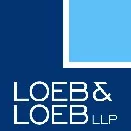The Consumer Financial Protection Bureau (CFPB) has announced that it is adding the largest entities in the debt collection industry - those with $10 million or more in "annual receipts" - to the category of "larger participants" in consumer financial product and service markets that the Bureau will supervise. This amendment to the CFPB's rules, which goes into effect Jan. 2, 2013, constitutes the first attempt to supervise the debt collection industry and will impact approximately 175 entities, representing more than 60 percent of the annual gross receipts of the market. The entities that will be overseen by the Bureau include three different kinds of third-party debt collection firms: companies that buy defaulted debt and collect the proceeds, companies that recover defaulted debt owned by other companies for a fee, and lawyers who collect defaulted debts from consumer financial products and services through litigation.
Under the Dodd-Frank Wall Street Reform and Consumer Protection Act, the CFPB has authority to supervise all nonbank entities of all sizes that offer financial products or services in the residential mortgage, private education lending and payday lending markets, as well as "larger participants" defined by the Bureau in other markets for consumer financial products or services. The CFPB published a notice of proposed rulemaking on Feb. 17, 2012, proposing to define "larger participants" in two markets: consumer reporting and consumer debt collection. The Bureau published the Consumer Reporting Rule on July 20, 2012, defining "larger participants" in the reporting industry (read our alert on this rulemaking here), and now has amended the rule to add larger third-party debt collection firms.
The Bureau's oversight will include assessing all aspects of the covered entities' business operations related to debt collection, including assessing whether the debt collection firms comply with requirements of federal consumer financial law, including the Fair Debt Collection Practices Act, obtaining information about the activities and compliance procedures of those entities, and assessing and detecting potential risks to consumers and consumer financial markets. The amended rule provides that the procedures and standards enumerated in the Consumer Reporting Rule will also apply to the examination and oversight of larger participants in the debt collection market. In addition, the Bureau released detailed examination procedures it will utilize once it begins scheduling examinations early next year.
The content of this article is intended to provide a general guide to the subject matter. Specialist advice should be sought about your specific circumstances.

